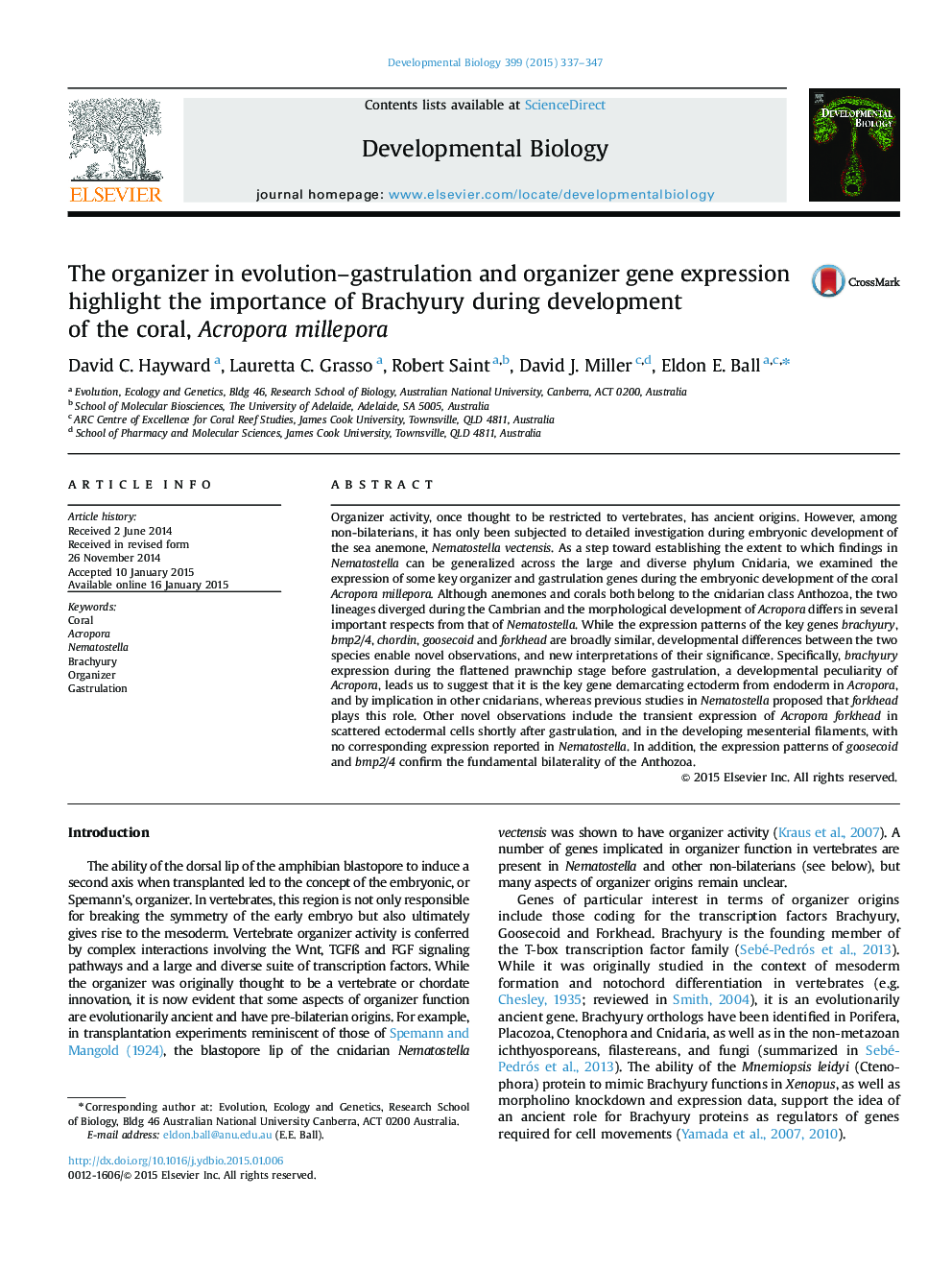| کد مقاله | کد نشریه | سال انتشار | مقاله انگلیسی | نسخه تمام متن |
|---|---|---|---|---|
| 2172956 | 1093655 | 2015 | 11 صفحه PDF | دانلود رایگان |

• Organizer gene expression is broadly conserved between Acropora and Nematostella.
• New/different expression patterns were noted for forkhead, goosecoid and bmp2/4.
• Brachyury, not Forkhead, separates presumptive endoderm and ectoderm.
• The bilaterality of Anthozoa is reaffirmed by bmp2/4 and goosecoid expression.
Organizer activity, once thought to be restricted to vertebrates, has ancient origins. However, among non-bilaterians, it has only been subjected to detailed investigation during embryonic development of the sea anemone, Nematostella vectensis. As a step toward establishing the extent to which findings in Nematostella can be generalized across the large and diverse phylum Cnidaria, we examined the expression of some key organizer and gastrulation genes during the embryonic development of the coral Acropora millepora. Although anemones and corals both belong to the cnidarian class Anthozoa, the two lineages diverged during the Cambrian and the morphological development of Acropora differs in several important respects from that of Nematostella. While the expression patterns of the key genes brachyury, bmp2/4, chordin, goosecoid and forkhead are broadly similar, developmental differences between the two species enable novel observations, and new interpretations of their significance. Specifically, brachyury expression during the flattened prawnchip stage before gastrulation, a developmental peculiarity of Acropora, leads us to suggest that it is the key gene demarcating ectoderm from endoderm in Acropora, and by implication in other cnidarians, whereas previous studies in Nematostella proposed that forkhead plays this role. Other novel observations include the transient expression of Acropora forkhead in scattered ectodermal cells shortly after gastrulation, and in the developing mesenterial filaments, with no corresponding expression reported in Nematostella. In addition, the expression patterns of goosecoid and bmp2/4 confirm the fundamental bilaterality of the Anthozoa.
Journal: Developmental Biology - Volume 399, Issue 2, 15 March 2015, Pages 337–347